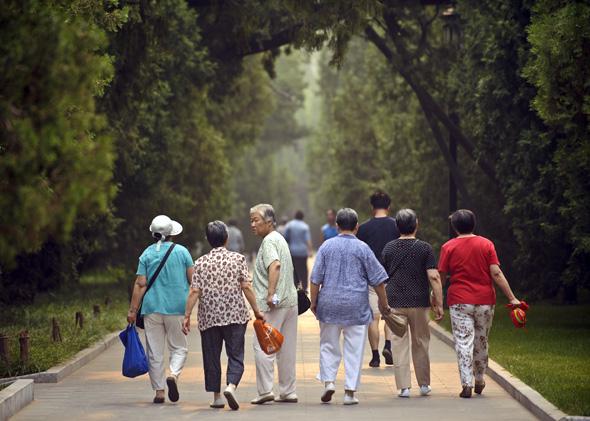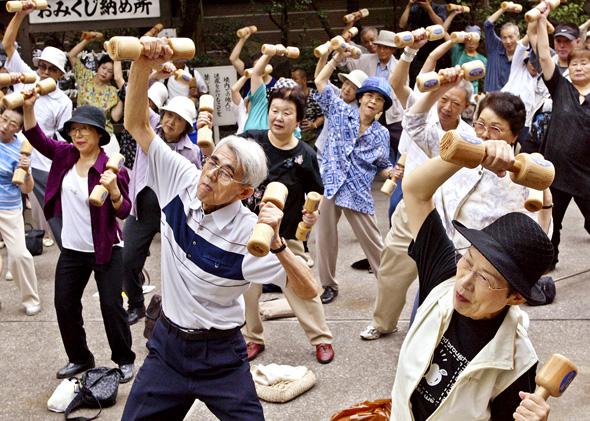It doesn’t take long to figure out where most dog owners and trainers stand on the age-old canine question. Do a quick Internet search, and you’ll find their hackles raised and example after example of old dogs learning new tricks, perhaps even faster than their puppy descendants.
But what about people? Brad Allenby in his Slate article explores a scenario where radical life extension will make an older generation “obsolete” by virtue of simply living too long and being unable to keep up with the rapid pace of technological innovation. But it may also be true that new technologies could in fact mitigate these differences. In any event, I suspect that many teachers of older adults—and older adults themselves—would relish the opportunity to learn new tricks.
But the even bigger question might better be aimed at societies, not individuals. That is, can older societies learn new tricks? As the world begins to experience the full force of plummeting fertility rates and rapid population aging, we have to ask whether aging societies will lose their entrepreneurial and innovation mojo.
To get a sense of the answer to that question, let’s look at three very different societies—Japan, China, and the United States.
Japan by any measure is now the world’s oldest country—whether it is average life expectancy, number of centenarians, or number of individuals over the age of 75. In addition, Japan has felt the additional pinch of a sharply declining birth rate such that it has experienced an absolute population decline of 2 million people in the past several years. (Large percentages of young people aren’t interested in sex at all.) The population drop has reduced demand for everything from cars to home mortgages.
For Japan, these demographic forces and their impact on Japan’s ability to innovate represent an existential threat. Japan’s Prime Minister, Shinzo Abe, was swept into office late last year with a mandate to shake things up. That he has done. In a recent interview with Foreign Affairs magazine, Abe said, “Japan is facing an extremely rapid decline in birthrates, and Japan’s national income has lost as much as 50 trillion yen due to prolonged deflation. … That is why we are facing a very difficult financial situation, and that was the core concern that led my government to launch the ‘three arrow’ recovery plan.”
Abe’s first arrow was expansion of government spending to stimulate economic growth. The second arrow was implementation of positive monetary policy. Both of those have been shot. But Abe’s “third arrow” for Japan’s vitality takes a longer view: It aims to use structural change to foster innovation and entrepreneurial zeal.
One response is to increase the consumption tax to sustain Japan’s social security services. But the even bigger gamble was to start up the presses and begin printing money—enough money to re-inflate an economy that has been deflationary for two decades—in order to produce an annual goal of 2 percent inflation. The Wall Street Journal captured Japan’s dilemma and its bold response in an excellent article last April titled “Stagnant Japan Rolls Dice on New Era of Easy Money.”
But the stakes are high for the world as well as Japan. The Japanese economy is No. 3, after the United States and China, and a major engine for economic growth and innovation. Whether Americans know it or not, every smartphone sold in the world contains Japanese technology that resulted from a powerful innovation engine. What happens in Japan will reverberate around the world.
For China, the race against “graying time” is just as urgent. As one expert wrote recently, the average Chinese lived until 74.8 years of age in 2010, rising from 68.6 in 1990. By 2050, 1 in 3 people in China is expected to be 60 or over. James Liang, a professor at the Stanford School of Business and Peking University, believes China is in danger of becoming a graying society with a shrinking population of young people who can contribute entrepreneurial sparks to the economy. A Businessweek article from earlier this year noted that Liang recently wrote in Caixin magazine, “If China maintains its current total average fertility rate, its demographic structure diagram by 2040 will be nearly the replica of that of Japan today.”
Indeed, China’s entrepreneurial zeal may already be waning, as reported by the Wall Street Journal in an article titled “Chinese College Graduates Play It Safe and Lose Out.” WSJ notes, “Two-thirds of Chinese graduates say they want to work either in the government or big state-owned firms, which are seen as recession-proof, rather than at the private companies that have powered China’s remarkable economic climb, surveys indicate.”

Photo by Peter Parks/AFP/Getty Images
For the United States, I would like to add a very old proverb from 380 B.C., when Plato wrote in The Republic that “Necessity is the mother of invention.” The October issue of Health Affairs gives us a sense of the magnitude of the necessity and invention looming in our future of longevity. In a paper, seven co-authors argue, “Recent scientific advances suggest that slowing the aging process (senescence) is now a realistic goal.” Instead of our current highly focused “disease model,” the authors advocate for a “delayed aging” approach that would reduce comorbidities over the entire lifetime. They estimate that the economic value of delayed aging is about $7.1 trillion over 50 years.
But delayed aging will also far outstrip those economic benefits with greatly increased entitlement outlays, especially for Social Security, Medicare, and Medicaid. The authors note with a delightful understatement, “The major challenges of delayed aging appear to be of a fiscal nature, but they are manageable.” Clearly, those words were penned before the government shutdown and the postcrisis threats to do it all again in three months.
In the end, every individual and society has a choice about how to respond to this future of longevity. We can’t see the future now, but the very natural human desire to extend life could very well be the catalyst for innovations now unimaginable.
It’s easy for Americans to lose their confidence these days in the face of a continuous scroll of bad news about our economy, society, and government. But as I write these words from my hotel room in Singapore, I see that the world still looks to the United States to lead. Nowhere is that need for leadership more true than in our ability to serve as the world’s innovation engine. We continue to set the gold standard for entrepreneurship—or perhaps I should say the silver standard—in the field of private-sector response to aging.
I turned 60 this year. That makes me very old in dog years, but I still like to learn new tricks. I hope you do, too. Our future depends on it.
